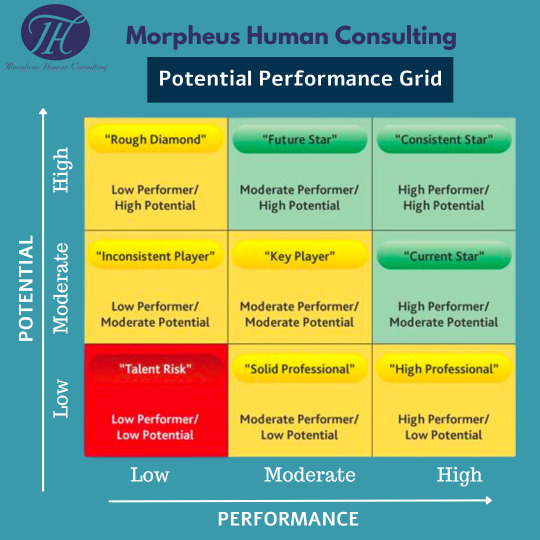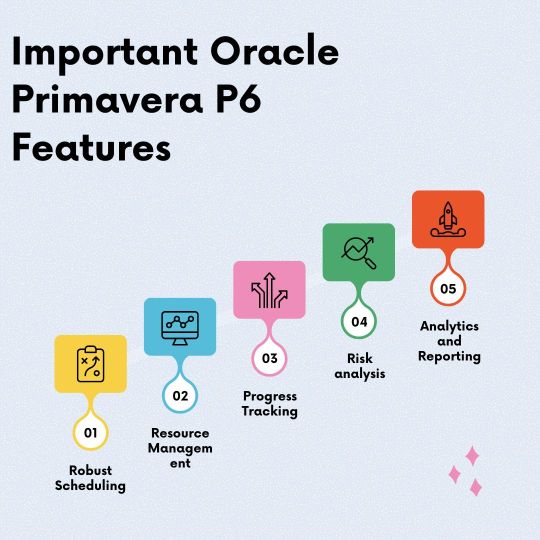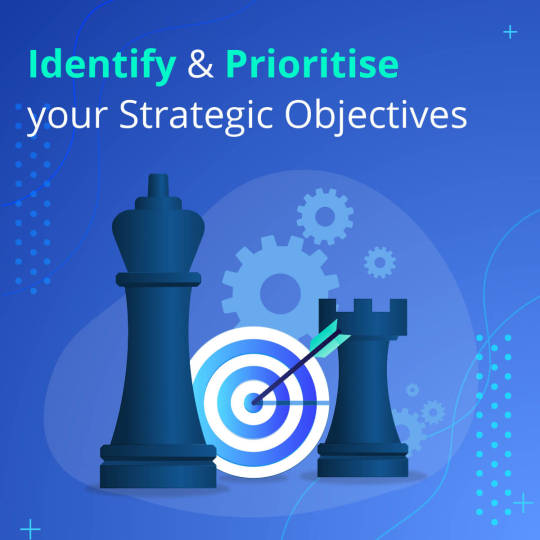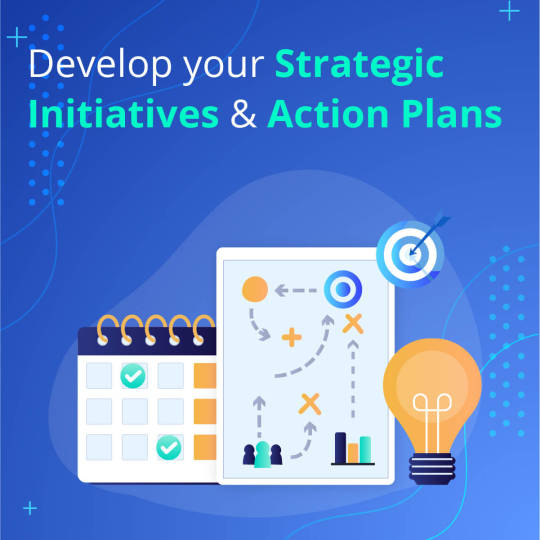#ProgressTracking
Explore tagged Tumblr posts
Photo

𝐄𝐧𝐭𝐞𝐫𝐩𝐫𝐢𝐬𝐞 𝐒𝐚𝐚𝐒 𝐏𝐥𝐚𝐭𝐟𝐨𝐫𝐦 – 𝐅𝐢𝐱𝐢𝐧𝐠 𝐎𝐧𝐛𝐨𝐚𝐫𝐝𝐢𝐧𝐠 𝐭𝐨 𝐑𝐞𝐝𝐮𝐜𝐞 𝐃𝐫𝐨𝐩-𝐎𝐟𝐟 𝐛𝐲 𝟑𝟕% 🖥️ They had a robust SaaS platform with powerful analytics, but one major flaw—new users rarely got past the first login. Activation was low. Drop-off during onboarding was high. Advanced features were underutilized. Support requests kept growing. 𝐖𝐞 𝐰𝐨𝐫𝐤𝐞𝐝 𝐜𝐥𝐨𝐬𝐞𝐥𝐲 𝐰𝐢𝐭𝐡 𝐩𝐫𝐨𝐝𝐮𝐜𝐭 𝐚𝐧𝐝 𝐠𝐫𝐨𝐰𝐭𝐡 𝐭𝐞𝐚𝐦𝐬 𝐭𝐨 𝐢𝐝𝐞𝐧𝐭𝐢𝐟𝐲 𝐰𝐡𝐞𝐫𝐞 𝐮𝐬𝐞𝐫𝐬 𝐰𝐞𝐫𝐞 𝐬𝐭𝐫𝐮𝐠𝐠��𝐢𝐧𝐠—𝐚𝐧𝐝 𝐫𝐞𝐛𝐮𝐢𝐥𝐭 𝐭𝐡𝐞 𝐞𝐱𝐩𝐞𝐫𝐢𝐞𝐧𝐜𝐞 𝐟𝐫𝐨𝐦 𝐝𝐚𝐲 𝐨𝐧𝐞: Designed a frictionless onboarding with progress tracking Integrated contextual tooltips and learning nudges Reorganized dashboard layout based on feature frequency Rewrote all microcopy for clarity, intent, and tone 𝐄𝐦𝐛𝐞𝐝𝐝𝐞𝐝 𝐩𝐞𝐫𝐬𝐨𝐧𝐚𝐥𝐢𝐳𝐞𝐝 𝐩𝐚𝐭𝐡𝐬 𝐛𝐚𝐬𝐞𝐝 𝐨𝐧 𝐮𝐬𝐞 𝐜𝐚𝐬𝐞 𝐚𝐧𝐝 𝐫𝐨𝐥𝐞: 📉 Result: 37% drop in onboarding abandonment 📈 More users reaching "aha" moments faster 📈 Increase in power users and deeper product engagement The best features don’t matter—if no one gets to them. Great onboarding is more than orientation. It’s your retention strategy. ⚙️ 𝐘𝐨𝐮𝐫 𝐨𝐧𝐛𝐨𝐚𝐫𝐝𝐢𝐧𝐠 𝐢𝐬𝐧’𝐭 𝐚 𝐭𝐮𝐭𝐨𝐫𝐢𝐚𝐥—𝐢𝐭’𝐬 𝐚 𝐟𝐢𝐫𝐬𝐭 𝐢𝐦𝐩𝐫𝐞𝐬𝐬𝐢𝐨𝐧. 𝐈𝐬 𝐲𝐨𝐮𝐫𝐬 𝐛𝐮𝐢𝐥𝐭 𝐭𝐨 𝐜𝐨𝐧𝐯𝐞𝐫𝐭 𝐨𝐫 𝐜𝐨𝐧𝐟𝐮𝐬𝐞? 𝐋𝐢𝐧𝐤 -> https://meraakidesigns.com/?utm_source=facebook&utm_medium=social&utm_campaign=homepage_traffic
#SaaSPlatform#Analytics#Activation#Onboarding#UserExperience#RetentionStrategy#AdvancedFeatures#SupportRequests#UserEngagement#FrictionlessOnboarding#ProgressTracking#Microcopy#ProductEngagement#AhaMoment#meraakidesigns
0 notes
Text
Maximize Your Study Efficiency with Study Fetch: Tips and Tricks

Study Fetch is designed to enhance your learning experience, but knowing how to use its features effectively can significantly impact your study results. Here are some tips and tricks to help you optimize your study sessions with Study Fetch.
Tip 1: Define Your Study Goals Clearly
Explanation: Before using Study Fetch, set clear study goals. Whether it's mastering a specific topic or preparing for an upcoming exam, defining your objectives will guide your study sessions.
Tip 2: Take Advantage of AI Summarization
Explanation: Use the AI summarization feature to condense lengthy texts into key points. This can help you focus on essential information and save time during your study sessions.
Tip 3: Create Quizzes to Reinforce Learning
Explanation: Regularly generate quizzes based on your study materials. This interactive approach helps reinforce your knowledge and identify areas that need further review.
Tip 4: Monitor Your Progress Regularly
Explanation: Use the progress tracking feature to monitor your learning journey. Regularly reviewing your progress can help you stay motivated and adjust your study strategies as needed.
Tip 5: Explore Different Subjects
Explanation: Don’t limit yourself to one subject. Explore various topics available on Study Fetch to broaden your knowledge and improve your overall learning experience.
Implement these tips to maximize your study efficiency with Study Fetch and achieve your academic goals. Visit aiwikiweb.com/product/study-fetch/
#StudyTips#StudyFetch#AI#Learning#Education#PersonalizedLearning#StudyCompanion#Quizzes#ProgressTracking#EdTech
0 notes
Text
Các mẫu bảng theo dõi tiến độ công việc bằng excel mới nhất 2024
Bảng theo dõi tiến độ công việc là công cụ Excel dùng để ghi lại và giám sát tiến độ. Nó hỗ trợ giám sát tiến độ, phân công công việc hiệu quả, và đánh giá hiệu suất của nhóm. Các mẫu bảng theo dõi tiến độ công việc phổ biến bao gồm danh sách công việc, biểu đồ Gantt, thẻ theo dõi thời gian và nhật ký giám sát vấn đề. Cách để quản lý công việc hiệu quả bằng Excel:
1. Xác định rõ các thông tin cơ bản như tên dự án, người phụ trách, nhiệm vụ, ngày giao và hạn hoàn thành.
2. Tạo trang tính mới cho từng công việc cụ thể, ghi lại nhiệm vụ và thời gian thực hiện.
3. Lập danh sách người phụ trách và gán nhiệm vụ cụ thể.
4. Xác định thời gian hoàn thành từng công việc, chia nhỏ các cột mốc để dễ quản lý.
5. Thường xuyên giám sát quá trình thực hiện, điều chỉnh kịp thời khi có vấn đề phát sinh.
Đọc thêm để tham khảo các mẫu bảng theo dõi tiến độ công việc bằng excel mới nhất 2024: https://fastdo.vn/bang-theo-doi-tien-do-cong-viec/

0 notes
Text
In project management the project charter is a pivotal document that sets the foundation for a successful project. Despite its significance, the project charter is often overlooked or underutilized. In this blog, we'll explore why a project charter is crucial, what it typically includes, and how it can make the difference between a project's success and failure.
#ProjectCharter#ProjectManagement#Stakeholders#Vision#Objectives#Authority#Responsibility#Alignment#Planning#RiskManagement#OrganizationalGoals#Communication#ReferenceDocument#ProjectExecution#ProjectLifecycle#Blueprint#Foundation#Clarity#Accountability#ResourceAllocation#DecisionMaking#Deliverables#MitigationStrategies#Collaboration#Teamwork#ProgressTracking#PerformanceEvaluation
0 notes
Text
#healthylifestyle#jumpxpro#fittech#heartratetracking#jumpintohealth#portableexercise#innovativefitness#jumpingsmart#progresstracking#seamlessworkouts
0 notes
Text
Charting Success: Explore Your Position on the Potential to Performance Grid!

.
For more Recruitment / Placement / HR / Consultancy services, connect with Morpheus Consulting:
📞: (+91) 8376986986
🌐: www.mhc.co.in
#PotentialToPerformance#AchievementGrid#PerformanceAssessment#GoalSetting#SuccessMapping#PerformanceEvaluation#CareerGrowth#PersonalDevelopment#StrivingForExcellence#ProgressTracking#recruitment#morpheusconsulting#humanresources#morpheushumanconsulting#recruitmentagency#hr#humanresource
0 notes
Text
Oracle Primavera P6 Project Management: A Comprehensive Guide
First of all,
Accuracy and productivity are critical in the field of project management. Professionals need reliable technologies that maximize resources, streamline procedures, and guarantee project success to manage the complexity of today's projects. In project management software, Oracle Primavera P6 Training is a towering example of quality, providing an extensive feature set specifically designed to satisfy the needs of a wide range of sectors. We explore the features, advantages, and significance of Primavera P6 training for aspiring project managers as we delve into the world of Oracle Primavera P6 in this blog.
Gratitude Oracle Primavera P6: Designed to make project planning, scheduling, execution, and control easier, Oracle Primavera P6 is an effective project management solution. Primavera P6 Classes, well-known for their adaptability and scalability, can handle projects of any size or complexity and give project managers the tools they need to manage resources, monitor progress, and reduce risks efficiently.
Important Oracle Primavera P6 Features:
Robust Scheduling: With Primavera P6 Course, users may precisely design project schedules that include tasks, milestones, and dependencies.
Resource Management: The program makes it possible to allocate and optimize resources effectively, guaranteeing their best use and financial viability.

Progress Tracking: Primavera P6 allows project managers to track project progress in real-time, which helps with timely interventions and well-informed decision-making.
Risk analysis: Project teams may foresee and proactively handle possible difficulties with the support of Primavera P6 Training, which provides advanced capabilities for risk assessment and mitigation.
Analytics and Reporting: With the software's extensive reporting features, stakeholders can learn about project performance, trends, and deviations.
The Value of Oracle Primavera P6 Training: Although Oracle Primavera P6 Course has many strong features, using them to their fullest potential calls for skill and knowledge. Professionals may increase productivity and ensure project success by gaining the knowledge and abilities to use Primavera P6 efficiently. Individuals get hands-on experience with Primavera P6 through structured courses, where they understand key topics like:
Configuring and setting up the project
Planning and optimizing schedules
Allocating resources and achieving parity
Monitoring and reporting on progress
Analysis and management of risks
Combination with additional project management software
Primavera P6 training programs include beginner, intermediate, and advanced courses that are customized to specific jobs and industry requirements, catering to professionals with varying skill levels. Primavera P6 training offers a strong foundation for success, giving you the know-how to take on projects with assurance and effectiveness, regardless of your experience level or desire to enter the sector.
Primavera P6 Classes:
Selecting the Appropriate Match: Selecting the appropriate learning path that corresponds with your objectives and desires is crucial when starting your Primavera P6 Course adventure. Seek respectable organisations or training providers that provide thorough Primavera P6 courses taught by qualified teachers. Take into account elements like the course curriculum, length, accreditation, and the mode of delivery (online or in person).
Additionally, look for training courses that use interactive exercises, case studies, and simulations to provide students with real-world, hands-on exposure to Primavera P6. A comprehensive learning experience is ensured by combining theoretical knowledge with practical application, which helps you efficiently transfer concepts into real-world project circumstances.
In conclusion, Oracle Primavera P6 Training is a key component of contemporary project management, enabling enterprises to accomplish their goals with accuracy and effectiveness. Professionals can maximize the capabilities of Primavera P6 and acquire the knowledge and abilities required to succeed in project management by investing in Primavera P6 training. Primavera P6 training opens the door to project management excellence, whether your goal is to advance your professional prospects or propel organizational success.
#OraclePrimaveraP6#ProjectManagement#PrimaveraP6Training#PrimaveraP6Course#ProjectScheduling#ResourceManagement#RiskAnalysis#ProgressTracking
0 notes
Text

🌟 Discover the Foundation of Your Health with In Step Physical Therapy! 🌟
Our Pelvic Floor Physiotherapy Offers:
🔐 Privacy and Comfort: Receive treatment in a supportive environment. 💪 Individualized Strength Training: Tailored exercises for your unique needs. 🧘♀️ Relaxation Techniques: Learn to alleviate tension in the pelvic muscles. 🩹 Recovery Support: we’re with you every step postpartum or post-surgical. 📈 Progress Tracking: Notice improvements with our dedicated care. Take a step towards better health with a strong pelvic floor!
📞 Call (587) 409-1754 to book your confidential consultation.
Visit https://instepphysio.ca/pelvic-floor-physiotherapy-edmonton/
Take control of your pelvic health. Reach out to us today!
#nStepPT#PelvicFloorHealth#Physiotherapy#StrongFoundation#HealthFromWithin#PelvicPower#privacy#comfort#individualizedstrength#relaxationtechniques#recoverysuppot#progresstracking#Edmonton#BoyleStreet#CentralMcDougall#McCauley#DowntownEdmonton#QueenMaryPark#Riverdale#Rossdale#Oliver#PrinceRupert#Westwood#AlbertaAvenue#SpruceAvenue#Glenora#Cromdale#Parkdale#Inglewood#NorthGlenora
0 notes
Text
Navigating the Complexity: Tips for Effective VB-MAPP Scoring
Navigating the complex landscape of VB-MAPP scoring requires more than just a basic understanding of the assessment. It demands a nuanced approach, incorporating both technical expertise and practical insight to ensure accuracy and effectiveness. As professionals working with individuals on the autism spectrum, mastering the art of VB-MAPP scoring is essential for tailoring interventions and fostering meaningful progress. In this guide, we'll explore key tips and strategies to enhance your VB-MAPP scoring proficiency.

Understanding the Framework
Before delving into scoring tips, it's crucial to grasp the foundational framework of the VB-MAPP assessment. The VB-MAPP, or Verbal Behavior Milestones Assessment and Placement Program, is designed to assess and track the language and learning skills of individuals with autism or related developmental disorders. It comprises various components, including milestones across verbal behavior domains, barriers analysis, and transition assessment.
Tip 1: Familiarize Yourself with the Scoring Criteria
One of the fundamental steps in mastering VB-MAPP scoring is to thoroughly understand the scoring criteria for each component. Take the time to review the scoring guides provided with the assessment materials. Pay close attention to the specific behaviors or skills that indicate mastery within each domain. Familiarity with the scoring criteria will enable you to make accurate judgments and avoid common pitfalls in assessment.
Tip 2: Adopt a Collaborative Approach
Scoring the VB-MAPP is not a solitary endeavor. Collaboration with colleagues, caregivers, and other professionals can provide valuable insights and enhance the accuracy of scoring. Encourage open communication and information-sharing to gain a comprehensive understanding of the individual's abilities and challenges. Collaborative scoring sessions can also serve as opportunities for professional development and knowledge exchange.
Tip 3: Prioritize Observation and Data Collection
Effective VB-MAPP scoring relies on thorough observation and data collection. Take the time to observe the individual in various settings and contexts, noting their responses, behaviors, and interactions. Collecting objective data through systematic observation allows for a more comprehensive assessment of their skills and progress. Utilize tools such as behavior tracking sheets or digital data collection apps to streamline the process and ensure consistency.
Tip 4: Consider Contextual Factors
When scoring the VB-MAPP, it's essential to consider contextual factors that may influence performance. Environmental variables, such as sensory stimuli or social cues, can impact an individual's ability to demonstrate certain skills. Additionally, personal factors, including motivation, attention, and emotional state, may affect their responsiveness during assessment. By acknowledging and accounting for these contextual factors, you can ensure a more accurate and holistic evaluation of the individual's abilities.
Tip 5: Focus on Individualized Needs and Goals
One of the key principles of VB-MAPP scoring is its emphasis on individualized assessment and intervention planning. Rather than adhering strictly to standardized benchmarks, prioritize the identification of the individual's unique strengths, preferences, and areas for growth. Tailor assessment strategies and intervention goals to align with their specific needs and aspirations. By focusing on individualized goals, you can maximize the relevance and effectiveness of the VB-MAPP scoring process.
Tip 6: Continuously Monitor Progress and Adjust Strategies
Scoring the VB-MAPP is not a one-time event but an ongoing process of monitoring progress and adjusting strategies accordingly. Regularly review assessment data and track changes in the individual's skills over time. Identify areas of improvement as well as potential barriers to progress. Be flexible and adaptive in your approach, modifying intervention strategies as needed to support the individual's continued growth and development.
Conclusion
Navigating the complexity of VB-MAPP scoring requires dedication, expertise, and a commitment to individualized practice. By following these tips and strategies, you can enhance your proficiency in VB-MAPP scoring and, more importantly, make a meaningful difference in the lives of individuals with autism spectrum disorders. Remember, effective scoring is not just about assigning numbers—it's about understanding, supporting, and empowering individuals to reach their full potential.
#VBMAPPScore#VBMAPPTips#AutismAssessment#ASDIntervention#ABAtherapy#SpecialEducation#LanguageDevelopment#IndividualizedLearning#ProgressTracking#BehaviorAnalysis#DevelopmentalDisorders#EarlyIntervention#EducationalGoals#ABACommunity#TherapyResources
0 notes
Text
How to Implement a Balanced Scorecard in 6 Steps?
Read More: https://balancedscorecard.ltslean.com/







#StrategicObjectives#KPIs#Targets#Benchmarks#Initiatives#ActionPlans#Measurement#Tracking#StrategyReview#Adaptation#MissionAndVision#DataCollection#MetricsMatter#DataDriven#PerformanceAnalysis#ReportingForSuccess#ProgressTracking#InformedDecisions#PerformanceManagement#BusinessAlignment#StrategicPlanning#BusinessMetrics#StrategyExecution#PerformanceMeasurement#OrganizationalGoals#ScorecardImplementation#BSC#BalancedScorecardSuccess#BalancedScorecard#Datapoint
0 notes
Text
Discover the transformative power of VBMAPP - the Verbal Behavior Milestones Assessment and Placement Program. Our app revolutionizes autism assessment and training, unlocking the full potential of individuals with ASD and language delays.
With comprehensive Milestones, Barriers, and Transition Assessments, along with over supporting skills, our user-friendly platform empowers caregivers, educators, and therapists. Don't miss this opportunity to download the VBMAPP app and join us in creating a more inclusive and supportive world for those we care for.
Experience the breakthrough in autism intervention - visit our website now!
#VBMAPP#AutismSupport#SpecialNeeds#LanguageDevelopment#InclusiveEducation#ASD#ProgressTracking#Caregivers#Therapists#Empowerment
0 notes
Text
Streamline Your Learning Experience with Study Fetch: The AI-Powered Study Companion

Study Fetch is an innovative platform designed to enhance the learning experience by providing personalized study materials and resources tailored to individual needs. Utilizing AI technology, Study Fetch helps students and learners of all ages streamline their study processes, making it easier to find relevant information, summarize notes, and track progress. Whether you're preparing for exams or looking to improve your knowledge, Study Fetch is your go-to study companion.
Core Functionality: Study Fetch analyzes user inputs to provide customized study materials, including summaries, quizzes, and study guides, ensuring that learners get the most relevant content for their educational goals.
Key Features:
Personalized Study Plans: Generate customized study plans based on your learning objectives, subjects, and time availability.
AI Summarization: Quickly summarize large volumes of text, helping students focus on key points and important information.
Quiz Generation: Create quizzes based on your study materials to reinforce learning and test your knowledge.
Progress Tracking: Monitor your learning progress over time, allowing you to adjust your study strategies accordingly.
Multi-Subject Support: Access a wide range of subjects, making it suitable for students across different academic disciplines.
Benefits:
Enhanced Learning Efficiency: By providing personalized study resources, Study Fetch helps learners save time and study more effectively.
Improved Retention: Interactive quizzes and summaries aid in better retention of information, making studying more productive.
Accessibility: Suitable for learners of all ages, Study Fetch caters to various learning styles and preferences.
Transform your study habits with Study Fetch’s AI-driven features. Visit aiwikiweb.com/product/study-fetch/
#StudyFetch#AI#Learning#Education#PersonalizedLearning#StudyCompanion#StudentSuccess#Quizzes#ProgressTracking#EdTech
0 notes
Text
#WeightLossTips#HealthyEating#CalorieDeficit#BalancedDiet#PortionControl#PhysicalActivity#Hydration#ProgressTracking#SupportForWeightLoss#HealthyHabits#MindfulEating#WeightLossJourney#SustainableWeightLoss
1 note
·
View note
Text
How to Stay Motivated When Managing Diabetes
Introduction:
Living with diabetes can be challenging, requiring consistent efforts to manage blood sugar levels and maintain a healthy lifestyle. However, staying motivated throughout this journey is crucial for long-term success. In this blog post, we will explore some effective strategies to help you stay motivated when managing diabetes.
Set Realistic Goals:
Setting realistic goals is essential to stay motivated. Break down your larger goals into smaller, achievable targets. For example, aim to lower your HbA1c by a certain percentage over a specific period or commit to regular physical activity for a set number of days each week. Achieving these smaller goals will provide a sense of accomplishment and keep you motivated to pursue larger goals.
Educate Yourself:
Knowledge is power when it comes to managing diabetes. Take the time to educate yourself about the disease, its complications, and the latest advancements in treatment. Stay updated with reputable sources, attend diabetes education classes, and consult with your healthcare provider for guidance. Understanding the impact of your actions on your health can serve as a powerful motivator.
Surround Yourself with Support:
Building a strong support system is crucial for staying motivated. Share your journey with family, friends, or a diabetes support group. Their encouragement, understanding, and empathy can provide a boost when you need it most. Additionally, consider involving your loved ones in your diabetes management by educating them about the condition and how they can support you.
Celebrate Small Victories:
Recognize and celebrate your achievements, no matter how small. Whether it's reaching your weight loss target, consistently monitoring your blood sugar, or making healthier food choices, acknowledge these victories along the way. Rewarding yourself for your efforts will help maintain motivation and reinforce positive behaviors.
Track Your Progress:
Keep a record of your blood sugar levels, physical activity, and other relevant measurements. Use apps, journals, or digital tools to track your progress. Monitoring your results over time can provide valuable insights into your diabetes management and help you identify patterns or areas for improvement. Witnessing positive changes can fuel your motivation to stay on track.
Seek Professional Guidance:
Consulting with healthcare professionals specializing in diabetes care is crucial for effective management. Regularly visit your primary care physician, endocrinologist, or a certified diabetes educator to discuss your progress, address concerns, and receive personalized guidance. If you're seeking specialized hormone clinic services, consider Dr. Amol Bukan at the Hormone Clinic for expert care.
Conclusion:
Managing diabetes requires consistent effort, but with the right mindset and strategies, you can stay motivated on your journey to better health. Set realistic goals, educate yourself about diabetes, build a support system, celebrate small victories, track your progress, and seek professional guidance when needed. Remember, motivation is a key ingredient in achieving long-term success in diabetes management. With determination and the support of healthcare professionals like Dr. Amol Bukan at the Hormone Clinic, you can effectively manage your diabetes and lead a fulfilling life.
#DiabetesManagement#Motivation#HealthyLifestyle#BloodSugarControl#DiabetesSupport#GoalSetting#DiabetesEducation#ProgressTracking#SmallVictories#HealthcareProfessionals#DrAmolBukan#HormoneClinic#DiabetesAwareness#SelfCare#Wellness#DiabetesJourney#DiabetesTips#DiabetesCommunity#DiabetesCare#DiabetesWellbeing#DiabetesInspiration#DiabetesMotivation#DiabetesResources#DiabetesLife#DiabetesSupportGroup#DiabetesPrevention#DiabetesTreatment#DiabetesHealth#DiabetesAwarenessMonth#DiabetesWarrior
1 note
·
View note
Text
#healthylifestyle#jumpxpro#fittech#heartratetracking#jumpingsmart#innovativefitness#jumpintohealth#portableexercise#progresstracking#seamlessworkouts
0 notes
Video
youtube
CaptainPilot AI Instructor Progress Tracking
🎯 CaptainPilot Aviation English Instructor GPT - Track Your Success with the Progress Tracking Feature!
Want to take your flight training to the next level? 🚀 With CaptainPilot Aviation English Instructor GPT's innovative Progress Tracking feature, you can monitor your learning journey, analyze your progress, and reach your goals faster! ✈️ Progress Tracking allows you to see detailed reports after each lesson, helping you identify areas for improvement and study more effectively. 📊💡 Whether you're a professional pilot or a student, this new feature will ensure you’re advancing confidently in your language development.
Watch now and discover how you can boost your progress! 📽️ CaptainPilot Aviation English Instructor GPT - The Future of Aviation English is Here!
Watch, learn, and succeed!
#youtube#AviationEnglish ProgressTracking FlightTraining AviationInstructor PilotTraining EnglishLearning CaptainPilot AviationEducation AviationSucc
0 notes